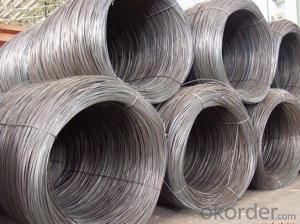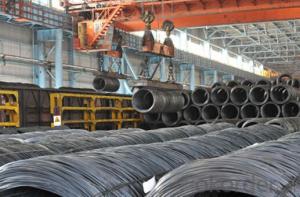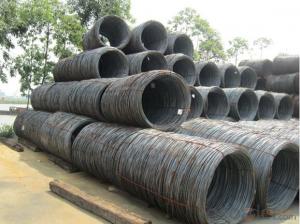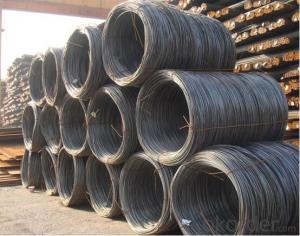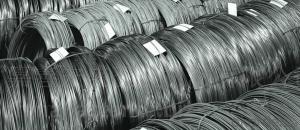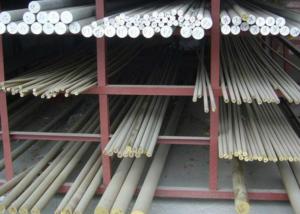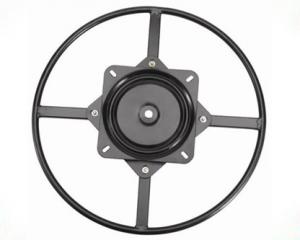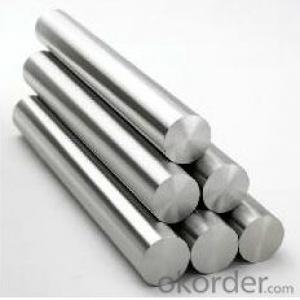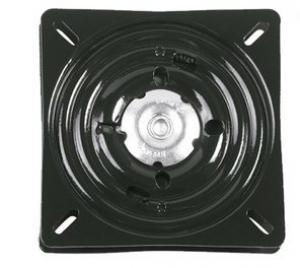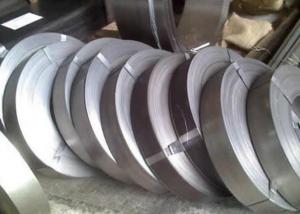Hot Rolled Structural SAE1008B 5.5mm Wire Rod
- Loading Port:
- Tianjin
- Payment Terms:
- TT OR LC
- Min Order Qty:
- 10 m.t.
- Supply Capability:
- 10000 m.t./month
OKorder Service Pledge
OKorder Financial Service
You Might Also Like
Item specifice
Hot Rolled Structural SAE1008B 5.5mm Wire Rod
Details of the Hot Rolled Structural SAE1008B 5.5mm Wire Rod
| Steel Grade | Q195-Q235,Q235,SAE 1008-1018 Hot Rolled Steel Wire Rod |
| Diameter | 5.5, 6.5, 7,8, 9,10, 12,14mm.etc. |
| Coil weight | 2m.t. |
| Application | drawing, construction materials, machinery parts,construction for Houses, Bridges, Roads,Packing |
| Deliver Time | 25-30 days after receipt of L/C or deposit by T/T |
| Packing | In coils, loading in container or by bulk vessel |
| Payment terms | 1).100% irrevocable L/C at sight. |
| 2).30% T/T prepaid and the balance against the copy of B/L. | |
| 3).30% T/T prepaid and the balance against L/C |
| Chemical Composition(%) | ||||||
| C | Mn | Si | S | P | Cr | |
| SAE1006B | 0.03~O.07 | ≤0.32 | ≤0.30 | ≤0.045 | ≤0.040 | 0.3-0.35 |
| Mechanical properties | ||||||
| Yield strength(N/mm2) | Tensile strength(N/mm2) | Elongation(%) | ||||
| 250-280 | 350-380 | ≥32 | ||||
| Grade | Chemical Composition(%) | |||||
| C | Mn | Si | S | P | Cr | |
| SAE1008B | 0.10max | 0.3~O.50 | 0.15max | 0.050max | 0.040 max | 0.3-0.35 |
| Mechanical properties | ||||||
| Yield strength(N/mm2) | Tensile strength(N/mm2) | Elongation(%) | ||||
| ≥195 | 315-430 | ≥30 | ||||
Supplier of the Hot Rolled Structural SAE1008B 5.5mm Wire Rod
CNBM International Corporation is the most import and export platform of CNBM group(China National Building Material Group Corporation) ,which is a state-owned enterprise, ranked in 270th of Fortune Global 500 in 2015.
With its advantages, CNBM International are mainly concentrate on Cement, Glass, Iron and Steel, Ceramics industries and devotes herself for supplying high quality series of refractories as well as technical consultancies and logistics solution.
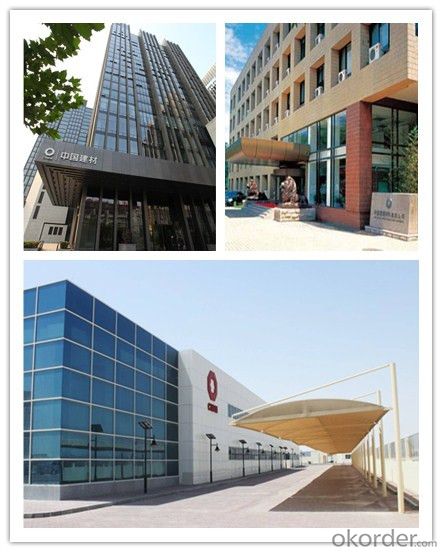
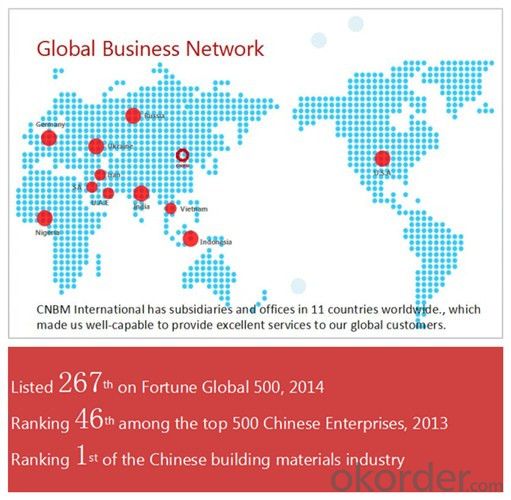
Delivery of the Hot Rolled Structural SAE1008B 5.5mm Wire Rod
Packaging Detail | Sea worthy packing /as per customer's packing instruction |
Delivery Detail | 15 ~ 40 days after receiving the deposit |
Products Show
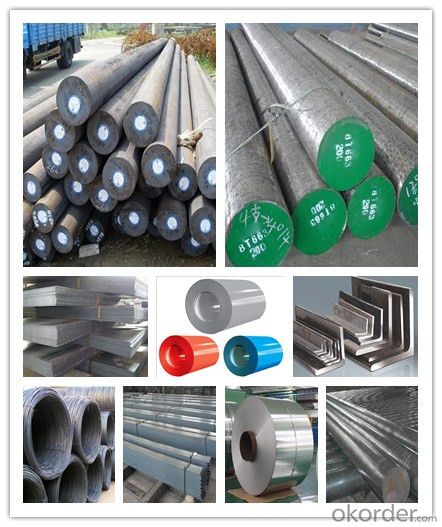
FAQ:
Are you a trading company or manufacturer? | Manufacturer |
What’s the MOQ? | 3 metric ton |
What’s your delivery time? | 15-35 days after downpayment received |
Do you Accept OEM service? | Yes |
what’s your delivery terms? | FOB/CFR/CIF |
What's the Payment Terms? | 30% as deposit,70% before shipment by T/T |
Western Union acceptable for small amount. | |
L/C acceptable for large amount. | |
Scrow ,Paybal,Alipay are also ok | |
Why choose us? | Chose happens because of quality, then price, We can give you both. Additionally, we can also offer professional products inquiry, products knowledge train (for agents), smooth goods delivery, excellent customer solution proposals. |
What's your available port of Shipment? | Main Port, China |
What’s your featured services? | Our service formula: good quality+ good price+ good service=customer's trust
|
Where are your Market? | Covering more than 160 countries in the world |
- Q:What are some common applications of special steel?
- Special steel, also known as alloy steel or tool steel, is a type of steel that has been specifically designed to exhibit enhanced properties compared to traditional carbon steel. Due to its unique composition, special steel finds a wide range of applications in various industries. One common application of special steel is in the manufacturing of cutting tools. Tools such as drills, saws, and milling cutters require high hardness, wear resistance, and toughness to withstand the demanding conditions of cutting and machining operations. Special steel provides these qualities, enabling the tools to maintain their sharpness and cutting efficiency for longer periods. Additionally, special steel is extensively used in the automotive industry. It is employed in the production of engine components, such as crankshafts, camshafts, and connecting rods, which require high strength, fatigue resistance, and heat resistance. Special steel's superior mechanical properties make it ideal for these critical engine parts, ensuring durability and performance. Another application of special steel is in the construction of molds and dies. Special steel is often used to fabricate injection molds, extrusion dies, and forging dies due to its exceptional thermal conductivity, wear resistance, and toughness. These properties allow for efficient and precise shaping of materials in the manufacturing of various products such as plastic components, metal parts, and automotive body panels. Special steel also finds applications in the aerospace industry. It is utilized in the production of aircraft components, including landing gears, turbine blades, and structural parts. The high strength, heat resistance, and corrosion resistance of special steel make it suitable for withstanding the extreme conditions experienced in aviation, ensuring the safety and reliability of aircraft. Furthermore, special steel is employed in the energy sector. It is used in the manufacturing of turbine blades for power generation, where high temperature and pressure conditions require materials with excellent creep resistance and thermal stability. Special steel's ability to withstand these harsh environments makes it an essential material in the construction of power plants. In summary, special steel is widely used in various industries for its exceptional properties. Its applications range from cutting tools and automotive components to molds and dies, aerospace parts, and power generation equipment. The versatility of special steel allows for the production of high-quality, durable, and efficient products across different sectors.
- Q:What are the different tempering techniques used for special steel?
- There are several tempering techniques used for special steel, including air tempering, oil tempering, water tempering, and salt bath tempering. Each technique involves heating the steel to a specific temperature and then cooling it at a controlled rate to achieve the desired level of hardness and toughness.
- Q:How is special steel used in the packaging industry?
- Special steel is used in the packaging industry to create durable, corrosion-resistant, and high-strength packaging materials. It is commonly used for manufacturing metal cans, drums, containers, and closures, ensuring the safe storage and transportation of various products, including food, chemicals, and hazardous materials. The unique properties of special steel make it an ideal choice for packaging applications as it enhances the strength, longevity, and protection of the packaging, ultimately ensuring the quality and integrity of the goods being packaged.
- Q:How does special steel contribute to the power transmission sector?
- Special steel plays a crucial role in the power transmission sector by offering enhanced strength, durability, and corrosion resistance. It is used to manufacture various components like gears, shafts, bearings, and turbines, which are essential for transmitting power efficiently and reliably. The exceptional properties of special steel ensure that these components can withstand high loads, extreme temperatures, and harsh operating conditions, thus contributing to the overall efficiency and reliability of power transmission systems.
- Q:What are the challenges in machining special steel with high hardness?
- One of the main challenges in machining special steel with high hardness is the excessive tool wear. High hardness steel is extremely tough and can quickly wear down cutting tools, leading to frequent tool changes and increased costs. Additionally, the high hardness of the material makes it more difficult to achieve the desired surface finish and dimensional accuracy. The heat generated during machining can also pose a challenge as it can cause thermal distortion and affect the integrity of the steel. Therefore, finding suitable cutting tools and implementing effective cooling techniques are crucial for successfully machining special steel with high hardness.
- Q:How does special steel resist fatigue?
- Special steel resists fatigue due to its unique composition and manufacturing process. It is typically made with higher levels of alloying elements such as chromium, molybdenum, and nickel, which enhance its strength and durability. Additionally, special steel undergoes specific heat treatments and rigorous quality control measures, ensuring its structural integrity and resistance to cyclic loading. These factors help prevent the formation and propagation of cracks and fractures, enabling the steel to withstand repeated stress and strain without significant degradation or failure.
- Q:What are the different heat treatment techniques used for special steel?
- Some of the different heat treatment techniques used for special steel include annealing, tempering, quenching, and case hardening. Annealing is a process that involves heating the steel to a specific temperature and then slowly cooling it to relieve stress and improve its ductility. Tempering is done by reheating the steel to a lower temperature after quenching to reduce brittleness and increase toughness. Quenching is a rapid cooling process that involves immersing the steel in a quenching medium like oil or water to achieve high hardness. Case hardening is a technique that involves adding a hard outer layer to the steel by introducing carbon or nitrogen into its surface and then heat treating it to achieve desired properties. These techniques are used to modify the structure and properties of special steel to meet specific application requirements.
- Q:How does special steel contribute to the overall economy?
- Special steel contributes to the overall economy in several ways. Firstly, it plays a crucial role in various industries such as automotive, construction, and manufacturing, where it is used for producing high-performance components and structures. This fosters innovation, enhances productivity, and drives economic growth. Additionally, the production and processing of special steel create employment opportunities, both directly and indirectly, stimulating job growth and income generation. Moreover, special steel exports contribute to trade balance and foreign exchange earnings, further bolstering the economy. Overall, the utilization of special steel in diverse sectors strengthens industrial competitiveness, supports economic development, and fuels economic prosperity.
- Q:How does special steel contribute to sustainability?
- Special steel contributes to sustainability in several ways. Firstly, special steel is highly durable and has a long lifespan. This means that products made from special steel, such as buildings, bridges, and machinery, have a longer service life compared to other materials. This reduces the need for frequent replacements and repairs, thereby reducing the consumption of resources and energy required for manufacturing. Secondly, special steel is recyclable. At the end of its life cycle, it can be easily collected and recycled into new steel products without any loss of quality. This reduces the demand for new raw materials and minimizes the environmental impact caused by mining and extraction processes. Furthermore, special steel is known for its strength and lightweight properties. This allows for the design and construction of lighter and more energy-efficient structures and vehicles. For example, by using special steel in automobiles, the weight of the vehicle can be reduced, resulting in lower fuel consumption and greenhouse gas emissions. Additionally, the production of special steel has become more sustainable over the years. Steel manufacturers are adopting advanced technologies and processes to reduce energy consumption, emissions, and waste generation. This includes using energy-efficient furnaces, recycling waste heat, and implementing water management strategies. Overall, the use of special steel contributes to a more sustainable future by promoting durability, recyclability, energy efficiency, and reduced environmental impact.
- Q:What are the different surface defects in special steel?
- Special steel can experience various surface defects. Some common defects include: 1. Scale, which is a layer of oxide that forms on the steel's surface during manufacturing. This can be caused by high temperatures or improper cooling, leading to a flaky or powdery appearance. The presence of scale can impact the quality and appearance of the steel. 2. Pitting refers to the development of small holes or depressions on the steel surface. It can be caused by corrosion, inadequate cleaning or surface preparation, or exposure to harsh environments. Pitting weakens the steel and makes it more prone to further corrosion. 3. Scratches are physical marks or indentations on the steel's surface. They can occur during handling, transportation, or processing. Scratches affect the integrity and appearance of the steel, often requiring repair or removal. 4. Roll marks are impressions or patterns left on the steel surface during the rolling process. Uneven pressure or improper alignment of rolling equipment can cause these marks, appearing as lines, grooves, or ridges. Roll marks impact the smoothness of the surface and may necessitate additional processing or polishing for removal. 5. Inclusions are foreign particles or substances embedded within the steel. They result from impurities in raw materials or contamination during manufacturing. Inclusions weaken the steel and have the potential to cause cracks or fractures. 6. Decarburization refers to the loss of carbon from the steel's surface layer. This can occur during heating or annealing processes, resulting in reduced hardness and strength. Decarburization is undesirable in special steel as it negatively affects performance. These are just a few examples of the surface defects that can occur in special steel. It is crucial to identify and address these defects to ensure the quality and performance of the steel product.
1. Manufacturer Overview |
|
|---|---|
| Location | |
| Year Established | |
| Annual Output Value | |
| Main Markets | |
| Company Certifications | |
2. Manufacturer Certificates |
|
|---|---|
| a) Certification Name | |
| Range | |
| Reference | |
| Validity Period | |
3. Manufacturer Capability |
|
|---|---|
| a)Trade Capacity | |
| Nearest Port | |
| Export Percentage | |
| No.of Employees in Trade Department | |
| Language Spoken: | |
| b)Factory Information | |
| Factory Size: | |
| No. of Production Lines | |
| Contract Manufacturing | |
| Product Price Range | |
Send your message to us
Hot Rolled Structural SAE1008B 5.5mm Wire Rod
- Loading Port:
- Tianjin
- Payment Terms:
- TT OR LC
- Min Order Qty:
- 10 m.t.
- Supply Capability:
- 10000 m.t./month
OKorder Service Pledge
OKorder Financial Service
Similar products
New products
Hot products
Related keywords
